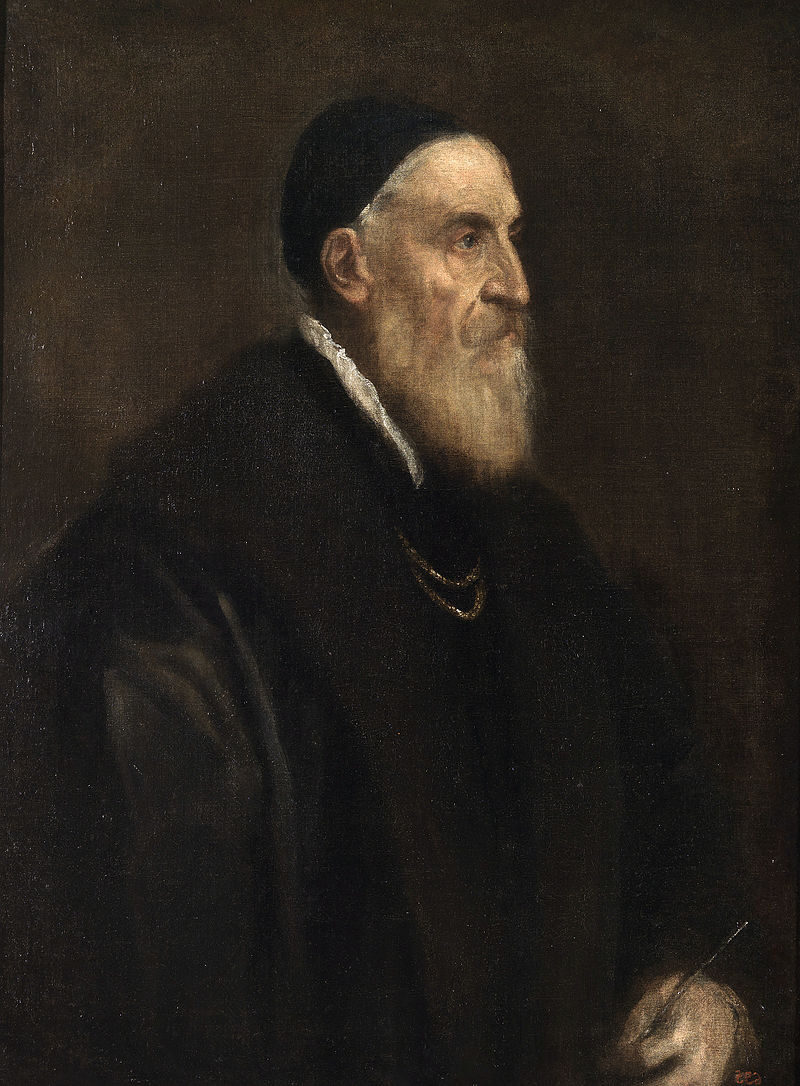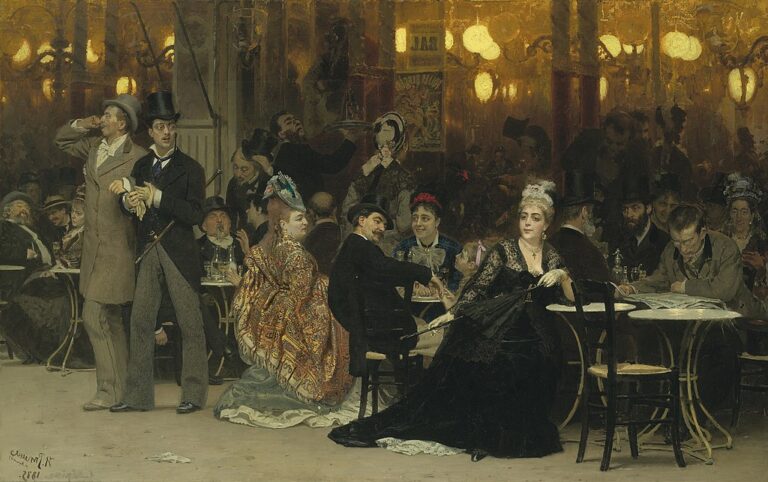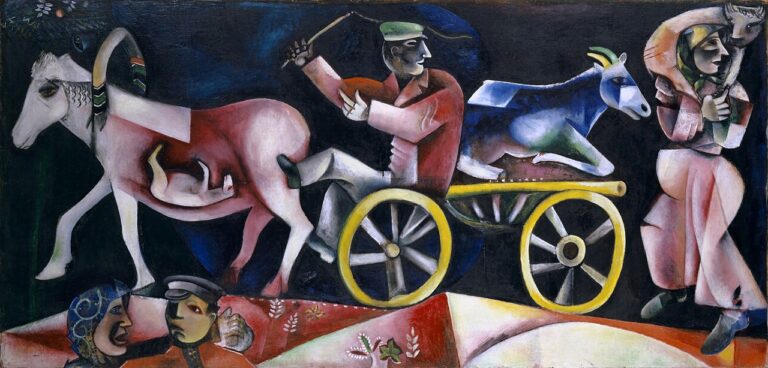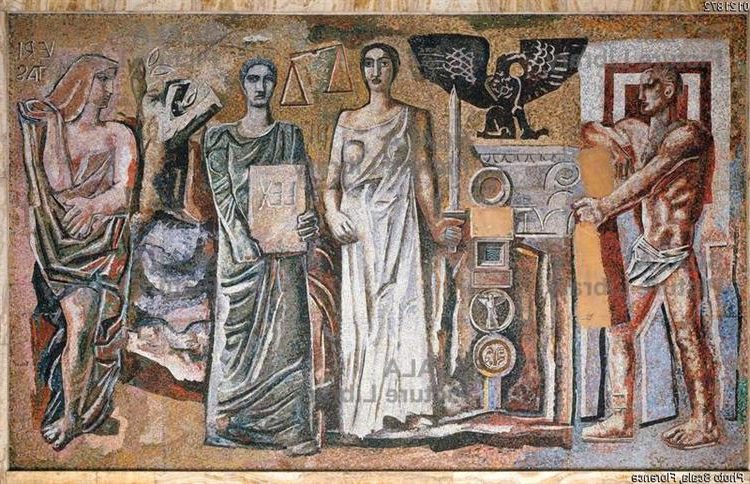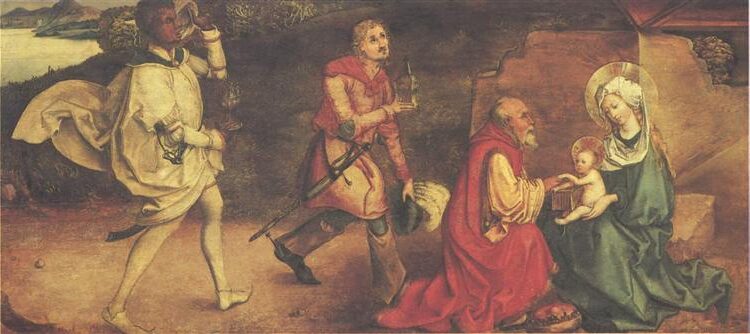Titian (Tiziano Vecellio) Painter: The Renaissance Master Who Transformed Venetian Art
Born: c. 1488/90, Pieve di Cadore, Republic of Venice
Death: 27 August 1576, Venice, Republic of Venice
Art Movement: Italian Renaissance
Nationality: Italian
Teachers: Gentile Bellini and Giovanni Bellini
Titian (Tiziano Vecellio) Painter: The Renaissance Master Who Transformed Venetian Art
Life and Career of Titian
Titian, born Tiziano Vecellio, emerged as the greatest painter of the Venetian school during the Italian Renaissance. His remarkable career spanned over seven decades. During this time, he created masterpieces for powerful patrons including Emperor Charles V, Pope Paul III, and King Philip II of Spain.
Early Years in Cadore
Titian was born around 1488-1490 in Pieve di Cadore, a small town in the Republic of Venice. His exact birth date remains uncertain, though his humble origins in this mountainous region influenced his later landscape backgrounds. As a young boy, Titian showed natural artistic talent.
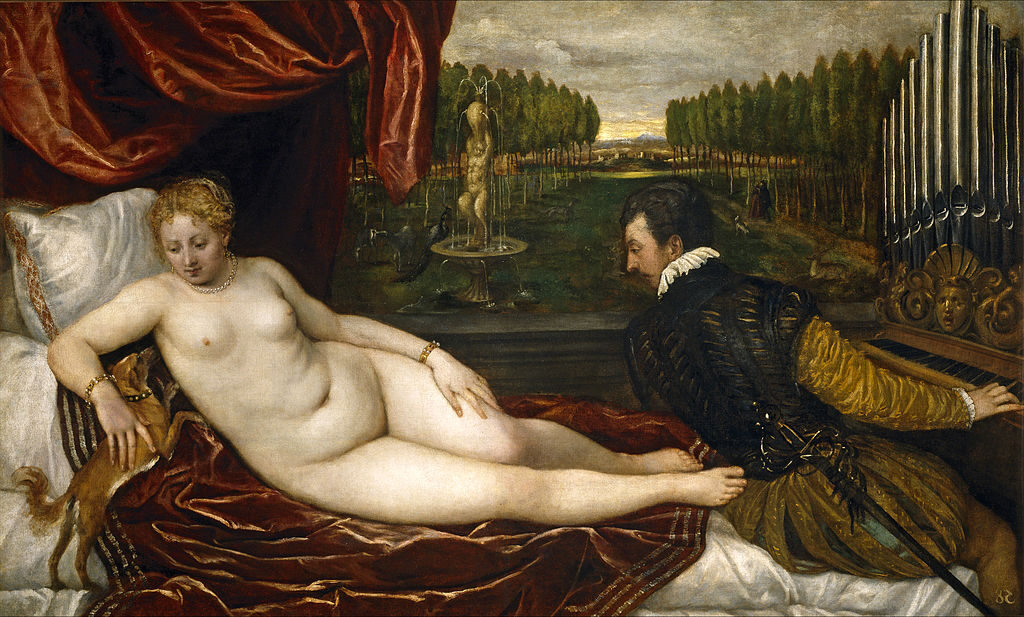
Venus and Organist and Little Dog (c. 1550) by Titian
At approximately age ten, he was sent to Venice to apprentice with a mosaicist. He soon moved to the workshop of Gentile Bellini and later worked under Giovanni Bellini, the leading Venetian painter of the time. These early training years exposed Titian to the vibrant artistic community of Venice.
The young Titian absorbed the Bellini workshop’s techniques while developing his own distinctive approach to color and light that would later revolutionize painting.
Influence and Collaboration
Titian’s early career was significantly shaped by his collaboration with Giorgione, another talented Venetian painter. The two artists worked so closely that many paintings from this period have disputed attributions.
After Giorgione’s death in 1510, Titian adopted elements of his friend’s soft, atmospheric style while incorporating his own bold use of color. This period marked Titian’s development of the distinctive “Venetian School” approach to painting—characterized by rich color, looser brushwork, and attention to light effects.
Giovanni Bellini’s influence remained important, particularly in religious compositions. However, Titian moved beyond his teacher’s more rigid formality toward a dynamic, emotional approach to subject matter.
By his mid-twenties, Titian had absorbed diverse influences and begun establishing his unique artistic voice.
Rise to Prominence in Venice
Titian’s reputation grew rapidly after he completed “Assumption of the Virgin” for the Basilica di Santa Maria Gloriosa dei Frari around 1518. This monumental altarpiece showcased his mastery of color, composition, and dramatic religious narrative.
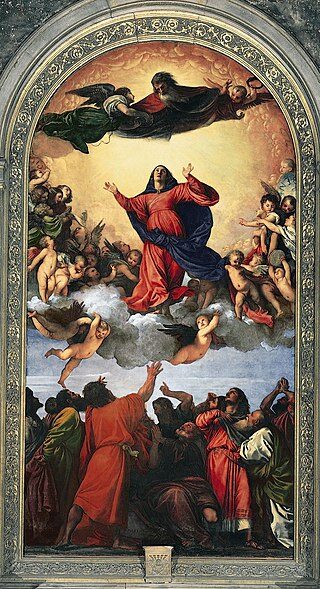
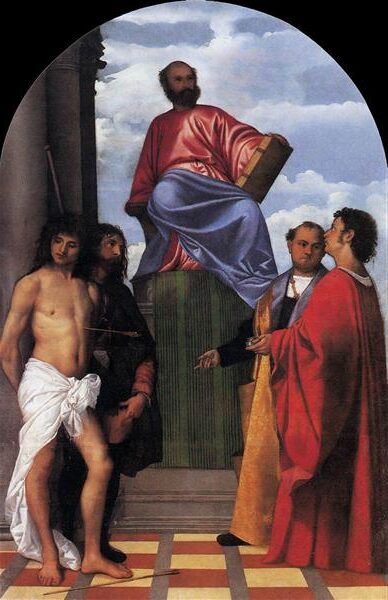
In 1516, following Giovanni Bellini’s death, Titian became the official painter to the Republic of Venice under Doge Andrea Gritti. This prestigious position secured commissions for portraits and public paintings celebrating Venetian glory.
His fame spread beyond Venice, attracting attention from powerful patrons. In 1533, Emperor Charles V appointed Titian as court painter, an extraordinary honor that brought international recognition and generous compensation.
Titian traveled to Rome in 1545-46, where he painted Pope Paul III and his family. These psychologically penetrating portraits demonstrated his ability to capture personality and power through paint.
Final Years and Legacy
Despite his advancing age, Titian remained extraordinarily productive in his later years. His painting style evolved toward looser brushwork and more spiritual themes, particularly in works for Philip II of Spain.
Titian continued working until his death in 1576 during a plague epidemic in Venice. He was approximately 85-90 years old, having outlived most of his contemporaries and rivals.
His influence extended far beyond Venice, shaping European painting for centuries. Artists from Rubens to Velázquez studied his techniques, particularly his bold use of color and innovative brushwork.
Titian’s legacy includes not just his artistic innovations but also his business acumen. He established a successful workshop, managed an international clientele, and carefully cultivated relationships with powerful patrons—creating a model for later artist-entrepreneurs.
Masterpieces and Artistic Style
Titian’s artistic legacy features distinctive approaches to color, innovative composition techniques, and masterful portrayal of both religious and secular subjects. His work evolved throughout his long career, establishing him as Venice’s premier painter and an influential figure in Western art.
Portraiture and Notable Figures
Titian revolutionized portraiture during the Renaissance, capturing not just physical appearances but the essence of his subjects. His portraits feature psychological depth and remarkable attention to texture, particularly in depicting fabric and skin.
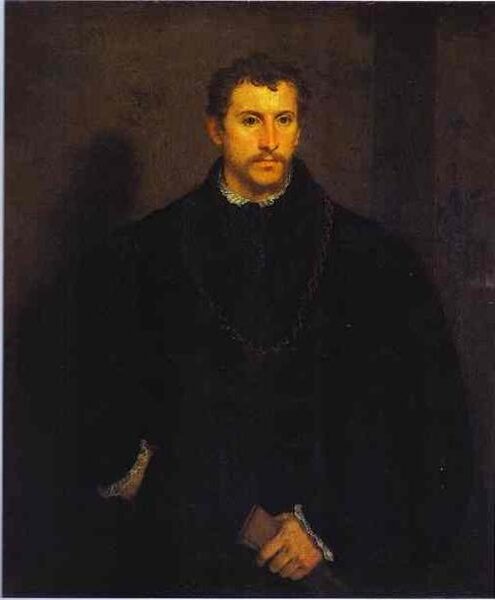

“Portrait of a Man” (often called “The Young Englishman”) demonstrates his ability to convey dignity and character through posture and expression. His portrait of Doge Andrea Gritti reveals both political power and personal complexity.
Titian painted numerous aristocrats and leaders, including Ranuccio Farnese, whose youth and nobility he captured masterfully. His court painter role for Emperor Charles V solidified his international reputation.
His portraits often feature rich backgrounds that complement the subject, with vibrant reds and deep blacks creating dramatic effects that would influence portraiture for centuries.
Mythological and Religious Works
Titian’s mythological paintings reveal his deep understanding of classical texts, particularly Ovid’s works. “Bacchus and Ariadne” (1520-1523) displays his narrative skill and vibrant use of blue pigments, depicting the god’s arrival to rescue the abandoned princess.
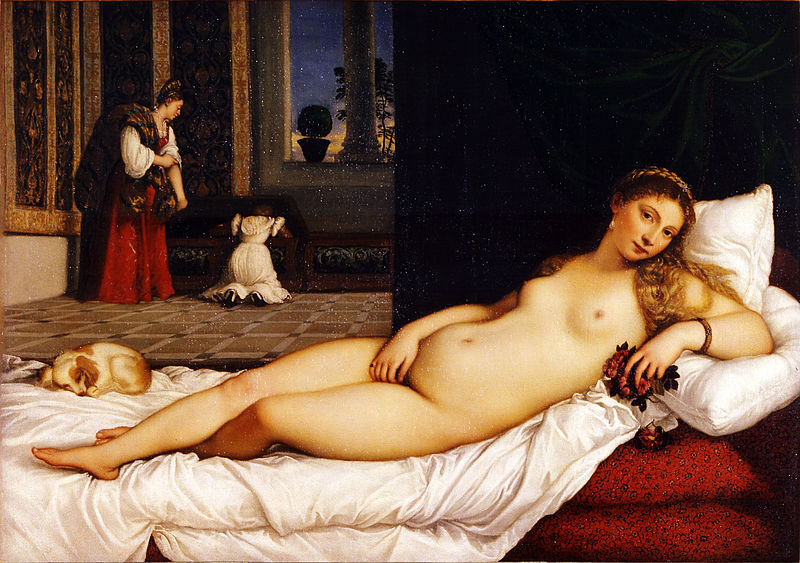
Venus of Urbino (1534) by Titian (Tiziano Vecellio)
“Venus of Urbino” (1534) represents one of art history’s most famous nudes, portraying the goddess with both sensuality and dignity. Similarly, “Venus with a Mirror” and “Venus and Adonis” showcase his ability to interpret classical mythology with emotional resonance.
His religious works demonstrate equal mastery. The “Assumption” altarpiece (1515-1518) for the Basilica di Santa Maria Gloriosa dei Frari features dramatic upward movement and radiant light.
“Sacred and Profane Love” blends allegorical and religious themes with exceptional technical skill, while “Danae” transforms the mythical story into a meditation on beauty and desire.
Innovation in Color and Composition
Titian’s revolutionary use of color earned Venice’s painting tradition the name “colorito” in contrast to Florence’s emphasis on drawing. He layered translucent glazes to create luminous effects that seem to glow from within the canvas.
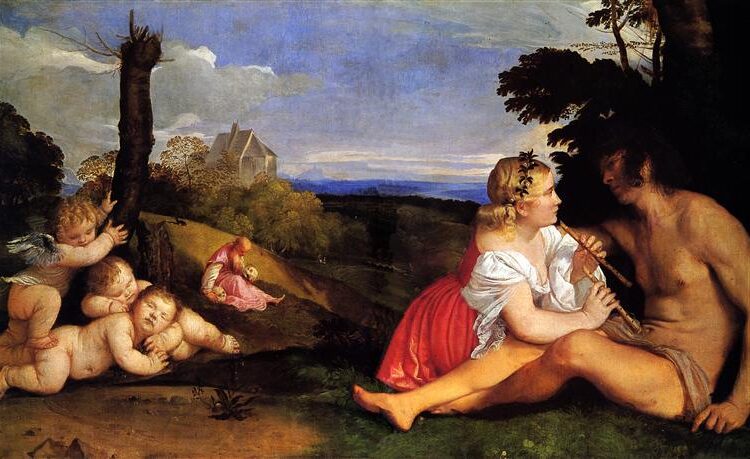
The Three Ages of Man (1511–1512) by Titian
His innovative painting style evolved throughout his career. Early works feature smooth surfaces and precise details, while his later pieces display looser brushwork with paint applied in bold strokes that appear almost modern.
Unlike Michelangelo who emphasized contour and form, Titian prioritized color to create mood and emotion. He often used a warm, golden palette that became his signature, with occasional brilliant blues and reds for dramatic effect.
Titian’s compositions typically balance dynamism with harmony. He positioned figures to create visual rhythms across the canvas, guiding the viewer’s eye through complex narratives. His late works embrace more dramatic lighting and emotional intensity, demonstrating his constant innovation even in his final years.
Titian’s Impact and Historical Context
Titian transformed Renaissance art through his masterful techniques and innovative approach. His work shaped the Venetian School’s distinctive style while his relationships with powerful patrons helped spread his influence throughout Europe.
Contributions to the Venetian School
Titian emerged as the leading figure of the Venetian School in the 16th Century, developing a unique style that emphasized color over line. Unlike the Florentine artists who prioritized drawing, Titian’s bold brushwork and rich palette became hallmarks of Venetian painting.

Jupiter and Antiope (Pardo Venus) (1540–1542) – Titian
Initially, Titian worked closely with Giorgione, making their early works difficult to distinguish. After Giorgione’s death, Titian adopted and expanded his mentor’s innovations. The famous “Sleeping Venus,” once attributed to Giorgione, now shows Titian’s significant contribution.
His technical innovations included layering translucent glazes to create luminous colors and using loose brushwork that became more pronounced in his later works. These techniques influenced numerous Venetian painters including Paris Bordone and later generations of European artists.
Relationship with Patrons
Titian’s career benefited greatly from powerful patronage that allowed him artistic freedom while securing his reputation. In 1516, he became the official painter to the Venetian Republic, a prestigious position that brought him numerous commissions.
His relationship with Alfonso d’Este, Duke of Ferrara, led to a series of mythological paintings that rank among his greatest achievements. These works displayed Titian’s narrative skills and sensual approach to classical subjects.
Perhaps his most significant patron was Emperor Charles V, who appointed Titian court painter in 1533 and later granted him the title of Count Palatine. This imperial connection elevated Titian’s status beyond that of a mere craftsman to an artist of international renown.
Legacy in Art History
Titian’s influence extends far beyond his lifetime, shaping Western art for centuries. His works hang in the world’s greatest museums, including the Uffizi Gallery and National Gallery of Art, where they continue to inspire artists and viewers alike.
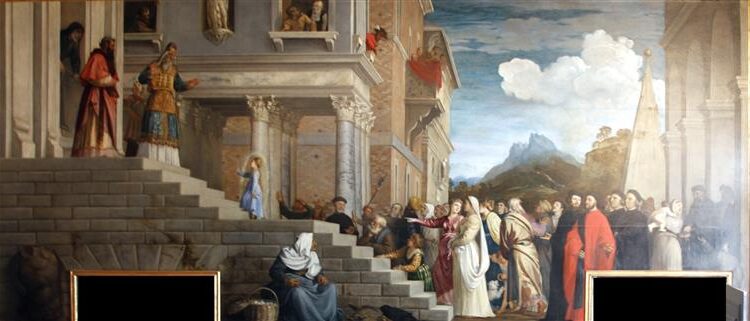
Presentation of the Virgin at the Temple (1539) by Titian
His innovative use of color influenced the Baroque masters, particularly Rubens and Velázquez, who studied his works carefully. The loose brushwork of his late style anticipated techniques that would not become common until the 19th century.
Titian’s approach to portraiture, capturing both physical likeness and psychological insight, established standards that remain relevant today. His ability to convey texture—from sumptuous fabrics to human flesh—remains unmatched.
His complete mastery across genres—religious paintings, portraits, mythological scenes, and landscapes—demonstrates a versatility that few artists have achieved, securing his place as one of history’s greatest painters.
Frequently Asked Questions
Titian’s impact on Renaissance art extends beyond his paintings to his technical innovations and relationships with powerful patrons. His unique approach to color and composition shaped art history for centuries.
What artistic contributions did Titian make to the Renaissance period?
Titian revolutionized Renaissance painting through his masterful use of color. He developed a technique of applying multiple layers of thin, translucent colors to create richness and depth.
His loose brushwork, especially in his later works, was ahead of its time. This approach allowed him to capture light, texture, and emotion with unprecedented realism.
Titian also elevated portraiture to new heights, depicting subjects with psychological insight rather than mere likeness. His portrayal of mythological scenes brought a sensual, human quality to classical themes.
How did Titian influence other artists of his time?
Titian’s bold use of color directly influenced the Venetian school of painting. His techniques were studied and adopted by contemporaries like Tintoretto and Veronese.
His innovative brushwork laid groundwork for later styles, particularly Baroque painting. Artists like Rubens and Velázquez drew inspiration from his methods.
Titian’s composition approach and narrative techniques influenced generations of painters. His ability to tell stories through carefully arranged figures and settings became a model for others.
Which of Titian’s works are considered his masterpieces?
“Assumption of the Virgin” (1515-1518) stands as one of Titian’s greatest achievements. The altarpiece’s dramatic upward movement and vibrant colors demonstrate his mastery of large-scale religious works.
“Venus of Urbino” (1534) represents his skill with sensual, mythological subjects. This painting’s intimate portrayal of the goddess set new standards for depicting the female form.
“Bacchus and Ariadne” (1522-1523) showcases his ability to bring classical stories to life through color and movement. His late work “The Flaying of Marsyas” reveals his evolving style toward more expressive brushwork.
What relationship did Titian have with the patrons of his art, such as rulers and the church?
Titian cultivated relationships with Europe’s most powerful figures. He became court painter to Holy Roman Emperor Charles V, who reportedly once picked up Titian’s dropped paintbrush as a sign of respect.
His connection to the Venetian state and the Catholic Church secured him prestigious commissions. Titian worked extensively for the Duke of Ferrara and King Philip II of Spain.
Unlike many artists, Titian maintained considerable control over his work and commanded high prices. His business acumen allowed him to achieve both artistic freedom and financial success.
How did the historical and cultural context of Venice impact Titian’s artwork?
Venice’s position as a trading hub exposed Titian to diverse influences. The city’s connections to the East brought rich colors and exotic materials that informed his palette.
The unique quality of Venetian light, reflected off the canals and lagoon, shaped his approach to color and atmosphere. This environment encouraged painterly techniques different from those in Florence or Rome.
Venice’s wealthy merchant class and powerful governing bodies provided Titian with both patrons and subjects. The city’s celebration of sensuality and beauty aligned with Titian’s artistic sensibilities.
What technical innovations can be attributed to Titian’s painting style?
Titian pioneered painting on canvas rather than wooden panels. This innovation allowed for larger works and different surface textures.
His development of glazing techniques transformed color application. He achieved unprecedented luminosity and depth by applying thin layers of translucent paint.
Titian’s later works show increasingly loose brushwork that captured essence rather than detail. This approach anticipated techniques that wouldn’t become common for centuries.


